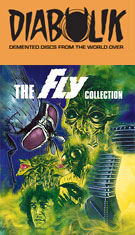
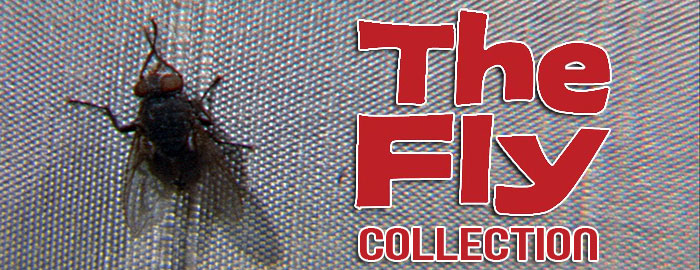
THE FLY
Color, 1958, 93 mins. 47 secs.
Directed by Kurt Neumann
Starring David Hedison, Patricia Owens, Vincent Price, Herbert Marshall
RETURN OF THE FLY
B&W, 1959, 80 mins. 20 secs.
Directed by Edward Bernds
Starring Vincent Price, Brett Halsey, David Frankham, John Sutton, Dan Seymour, Danielle De Metz
CURSE OF THE FLY
B&W, 1965, 86 mins. 7 secs.
Directed by Don Sharp
Starring Brian Donlevy, George Baker, Carole Gray, Yvette Rees, Burt Kwouk, Michael Graham, Mary Manson
THE FLY
Color, 1986, 95 mins. 39 secs.
Directed by David Cronenberg
Starring Jeff Goldblum, Geena Davis, John Getz
THE FLY II
Color, 1989, 104 mins. 44 secs.
Directed by Chris Walas
Starring Eric Stoltz, Daphne Zuniga,
Lee Richardson, John Getz
Scream Factory (Blu-ray) (US RA HD), Via Vision (Blu-ray) (Australia R0 HD), Fox (DVD) (US R1 NTSC) / WS (2.35:1) (16:9)
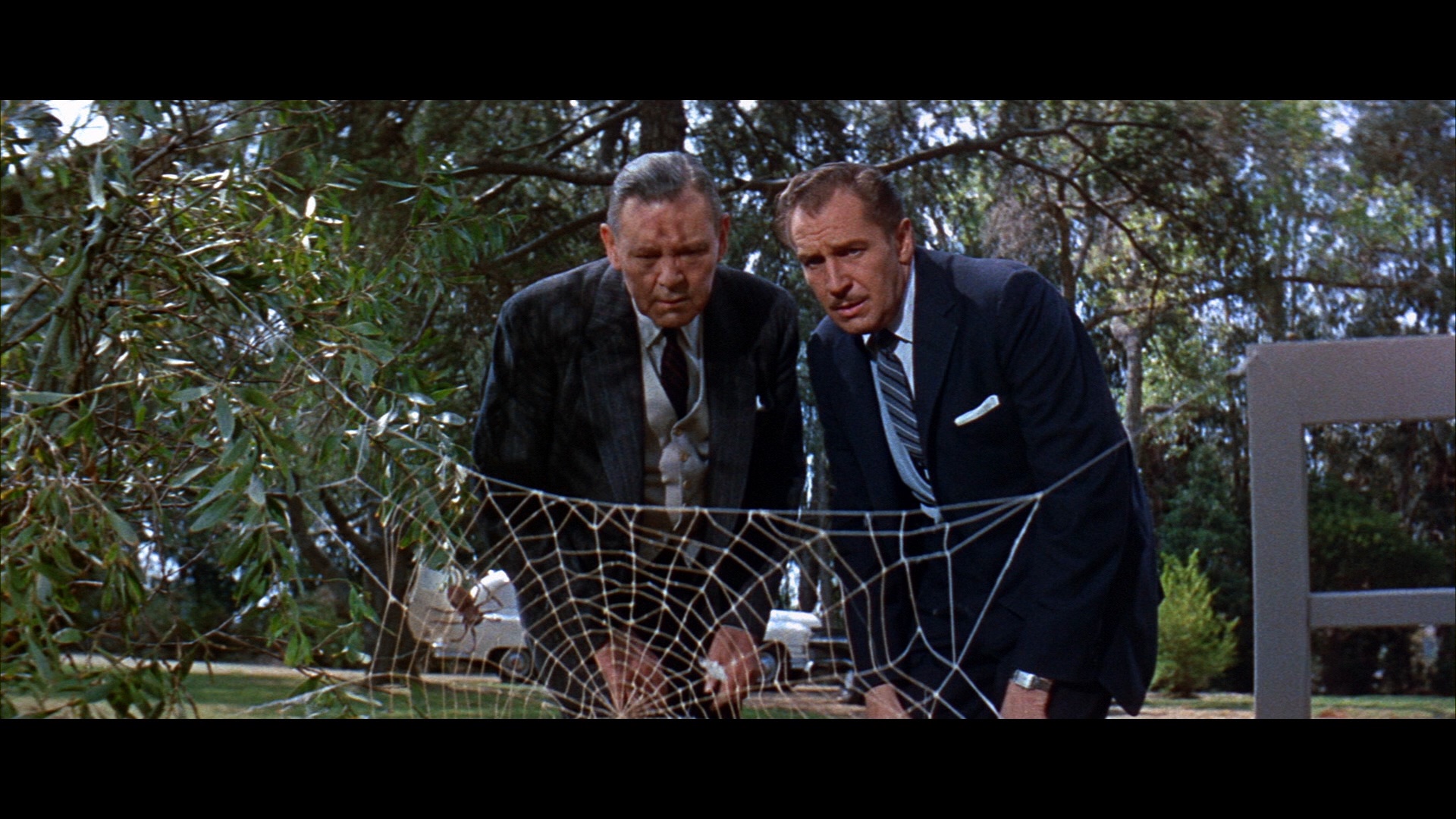 any standard, the series of films
any standard, the series of films 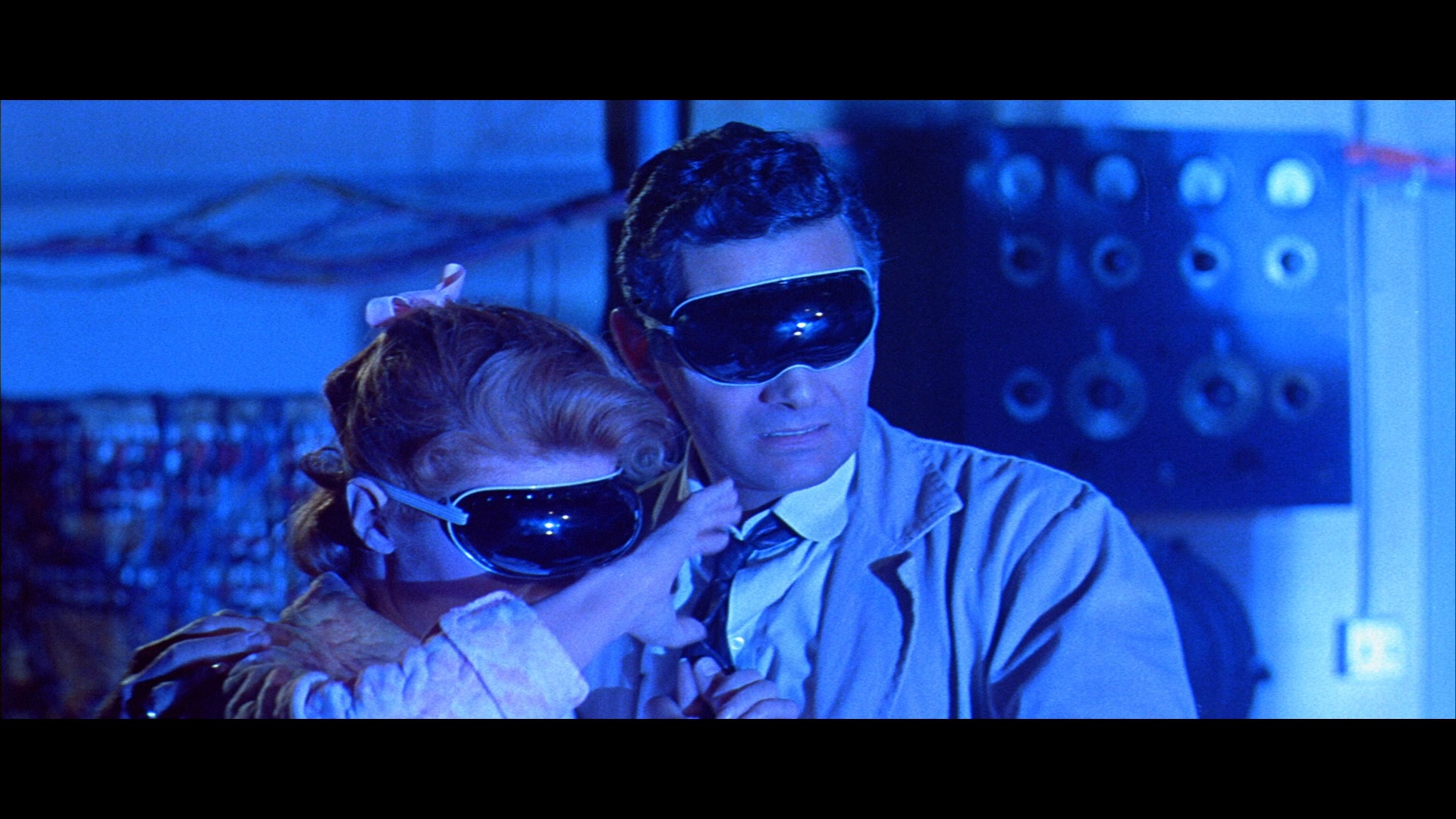 begun by (the former) 20th Century Fox in 1958 with The Fly is one of the most grotesque and memorable ever churned out by an American studio. The 1950s may be thought of as a cinematic era for atomic monsters, rockets, and flying saucers, but when The Fly came out late in the Eisenhower era, it was a conceptual shocker that had audiences reeling from its outrageous imagery involving the aftermath of a teleportation experiment gone horribly wrong. The exploits of the tragic Delambre family went on to fuel two sequels with diminishing box office returns, after which the concept laid dormant for over two decades until a surprising revisit from none other than David Cronenberg. His Oscar-winning 1986 overhaul was a rare example of a genre remake to earn more critical respect than its predecessor, with a pulpy but enjoyable sequel following in its wake three years later. All five films have been gathered up in a late 2019 Blu-ray box from Scream Factory, expanding greatly on a more stripped-down collection on Australian Blu-ray and bringing two of the titles to 1080p for the first time in the U.S.
begun by (the former) 20th Century Fox in 1958 with The Fly is one of the most grotesque and memorable ever churned out by an American studio. The 1950s may be thought of as a cinematic era for atomic monsters, rockets, and flying saucers, but when The Fly came out late in the Eisenhower era, it was a conceptual shocker that had audiences reeling from its outrageous imagery involving the aftermath of a teleportation experiment gone horribly wrong. The exploits of the tragic Delambre family went on to fuel two sequels with diminishing box office returns, after which the concept laid dormant for over two decades until a surprising revisit from none other than David Cronenberg. His Oscar-winning 1986 overhaul was a rare example of a genre remake to earn more critical respect than its predecessor, with a pulpy but enjoyable sequel following in its wake three years later. All five films have been gathered up in a late 2019 Blu-ray box from Scream Factory, expanding greatly on a more stripped-down collection on Australian Blu-ray and bringing two of the titles to 1080p for the first time in the U.S. 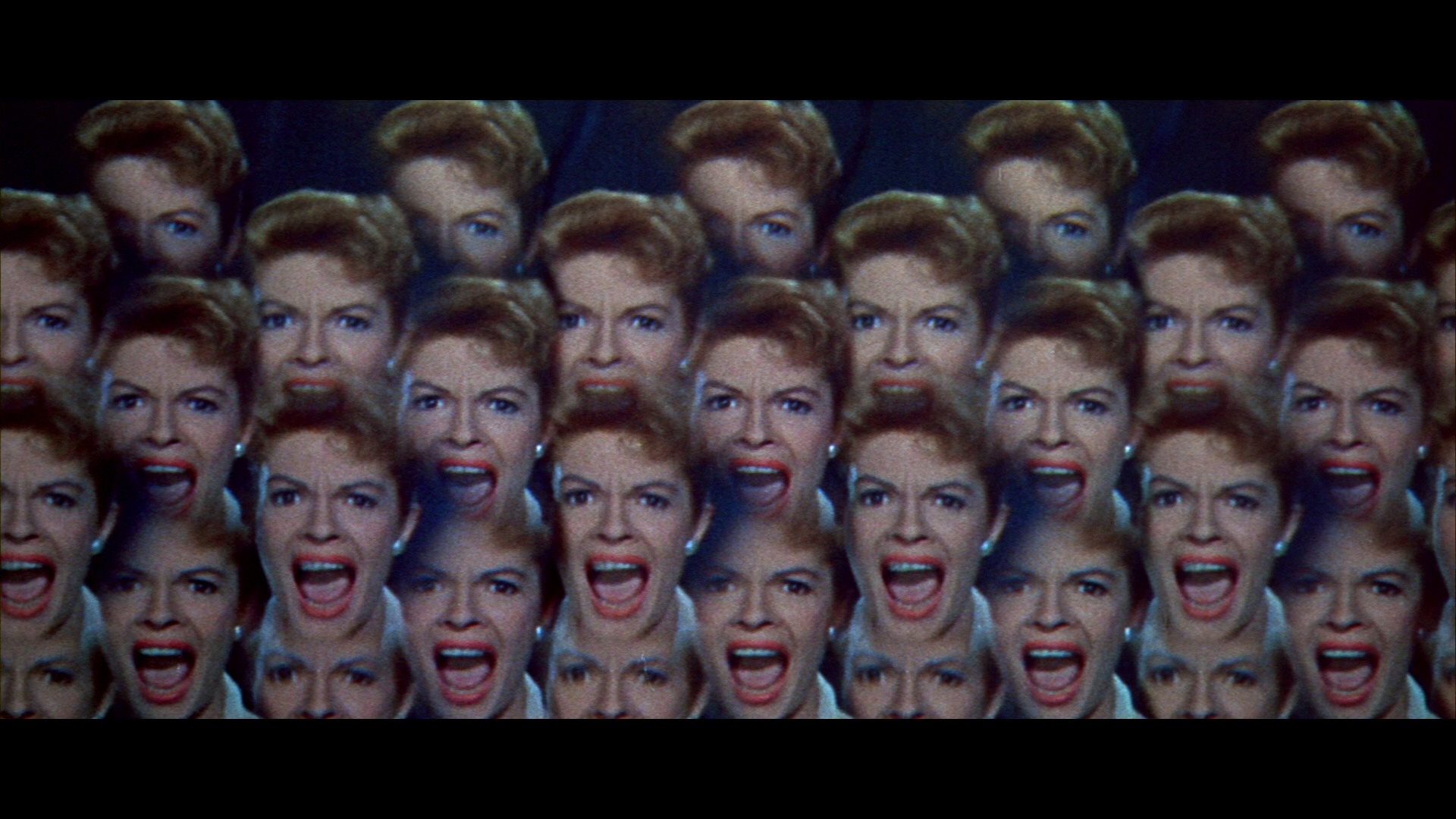 school kids running around squealing "Help me! Help meeee!" at random intervals. The film still
school kids running around squealing "Help me! Help meeee!" at random intervals. The film still 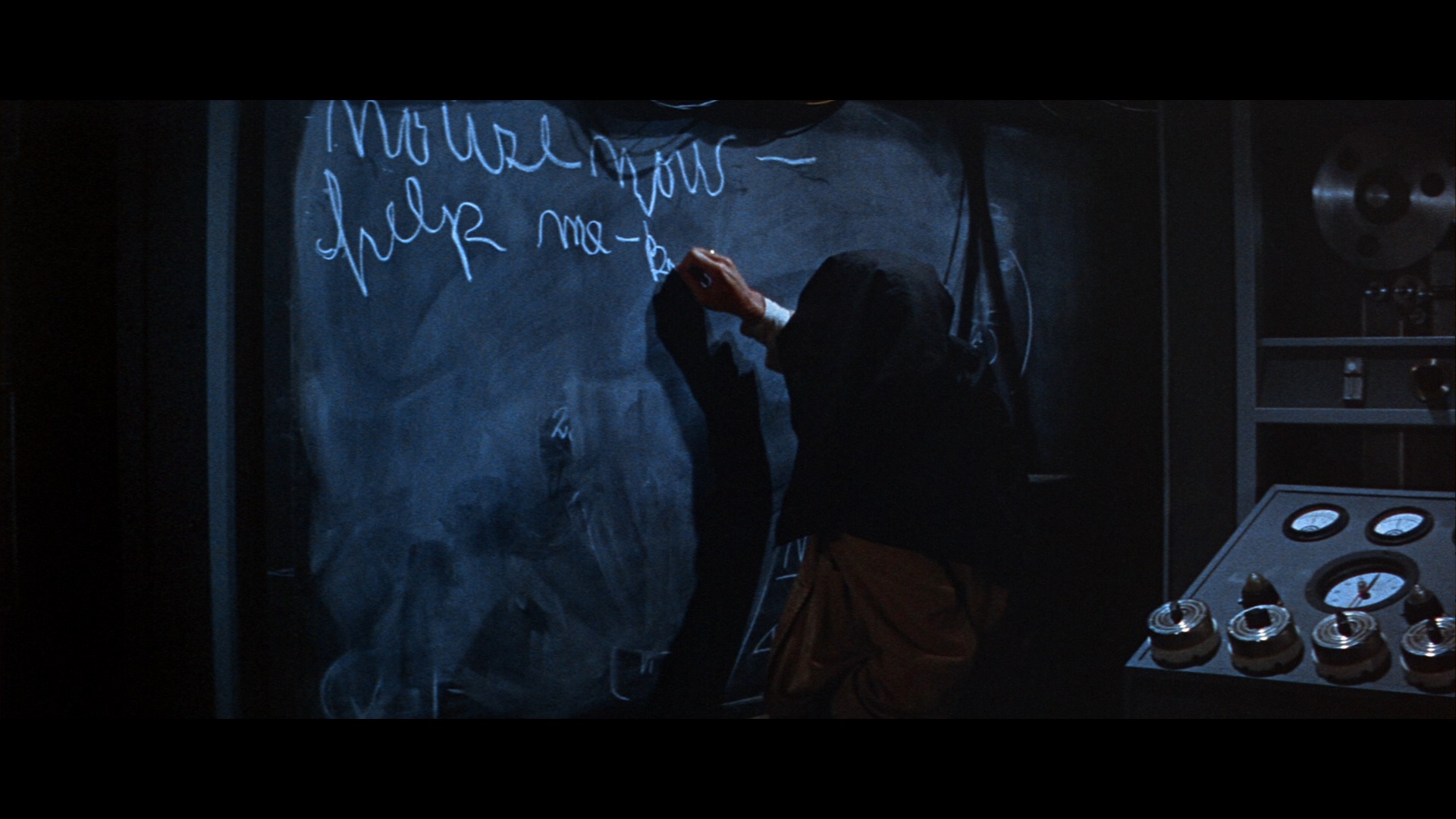 packs quite a punch, using its sparing but memorable shock effects to accentuate a storyline (taken from a Playboy short story and scripted by future Shogun scribe James Clavell) that essentially functions as an unorthodox murder mystery whose detective, played by Herbert Marshall, plays only a partial role in its unraveling.
packs quite a punch, using its sparing but memorable shock effects to accentuate a storyline (taken from a Playboy short story and scripted by future Shogun scribe James Clavell) that essentially functions as an unorthodox murder mystery whose detective, played by Herbert Marshall, plays only a partial role in its unraveling. 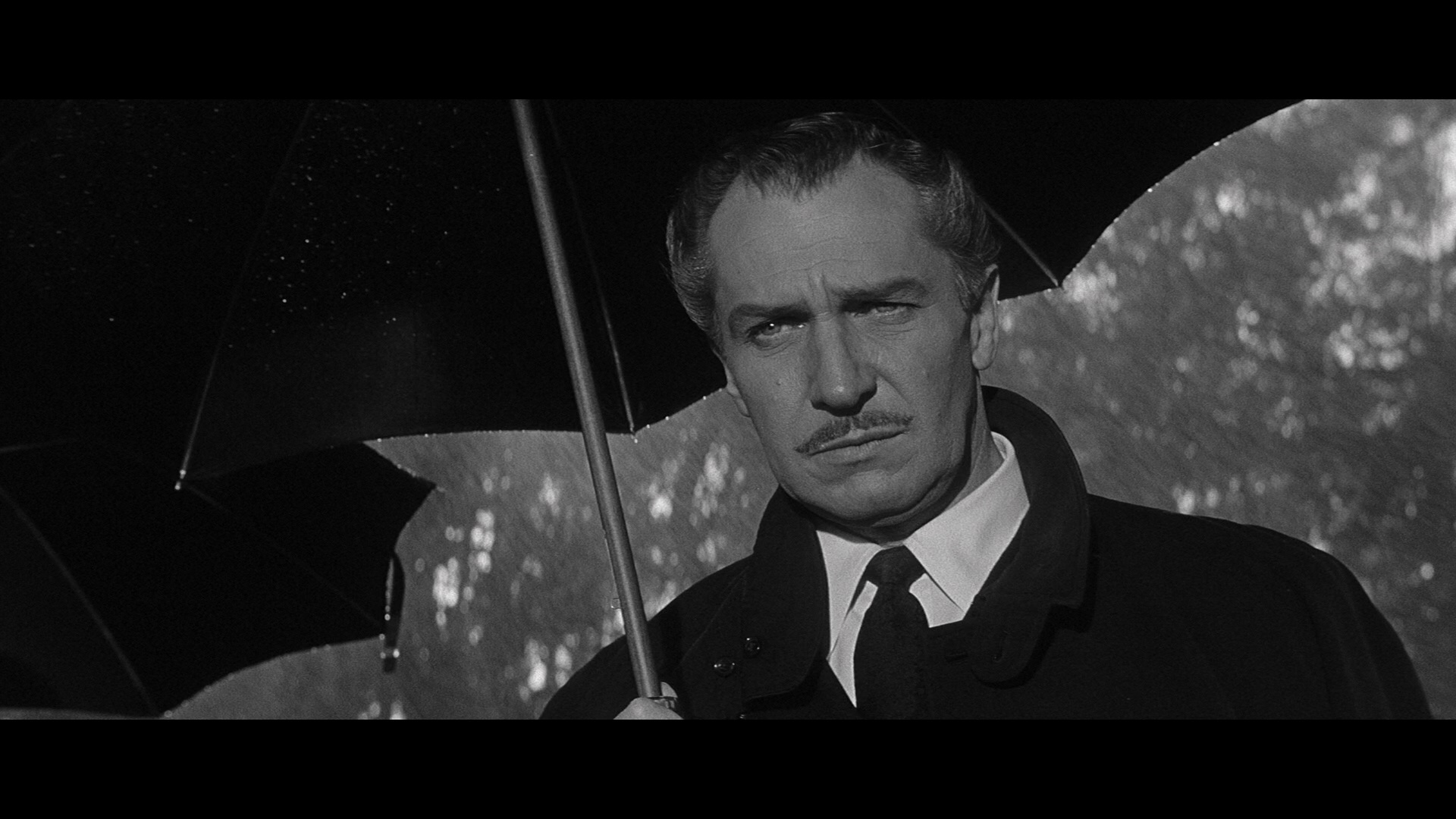 as it already made for a solid a/v experience in the first place right down to the dramatic, wonderful separation of the DTS-HD 4.0 English
as it already made for a solid a/v experience in the first place right down to the dramatic, wonderful separation of the DTS-HD 4.0 English 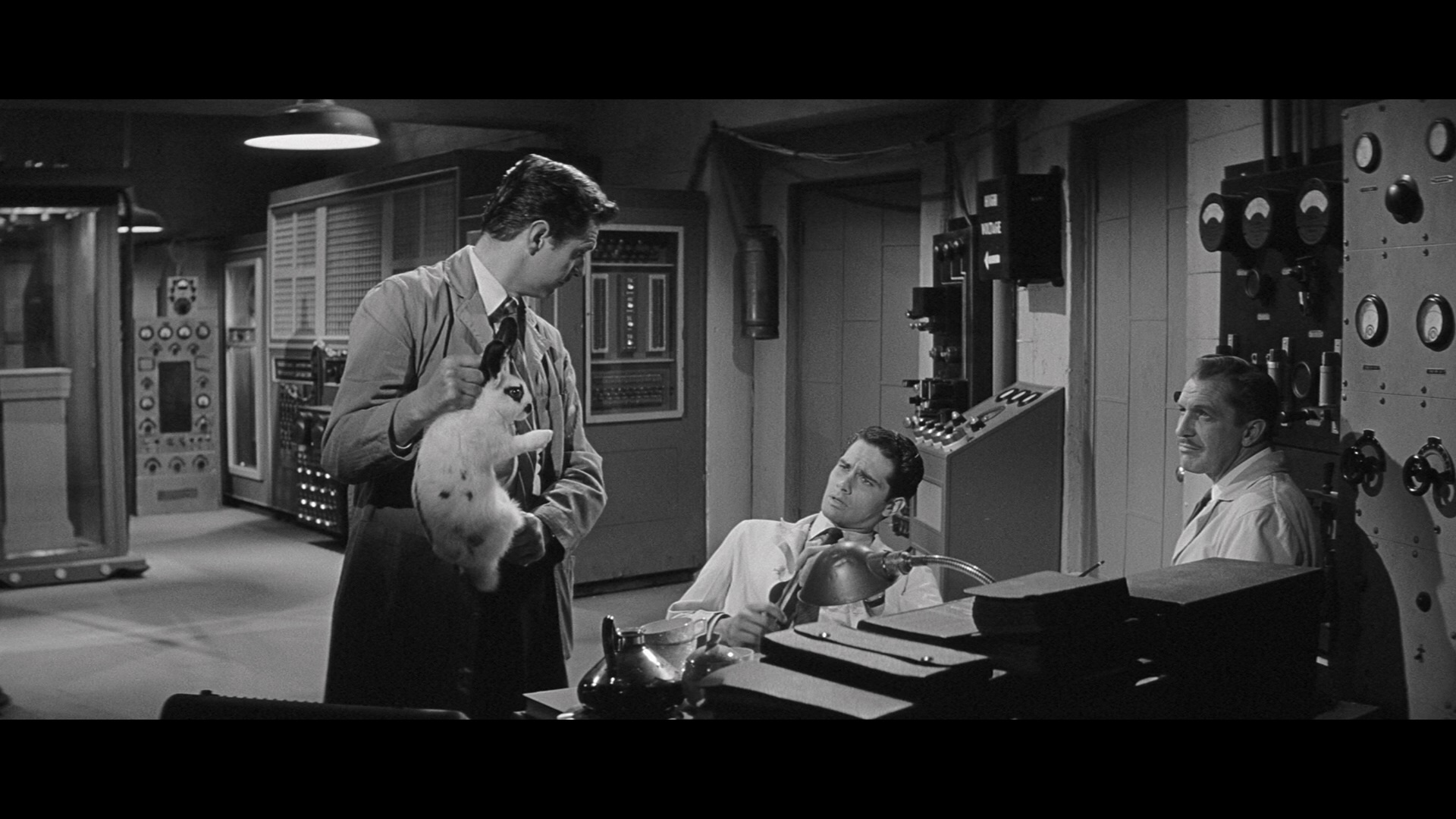 track.
track. 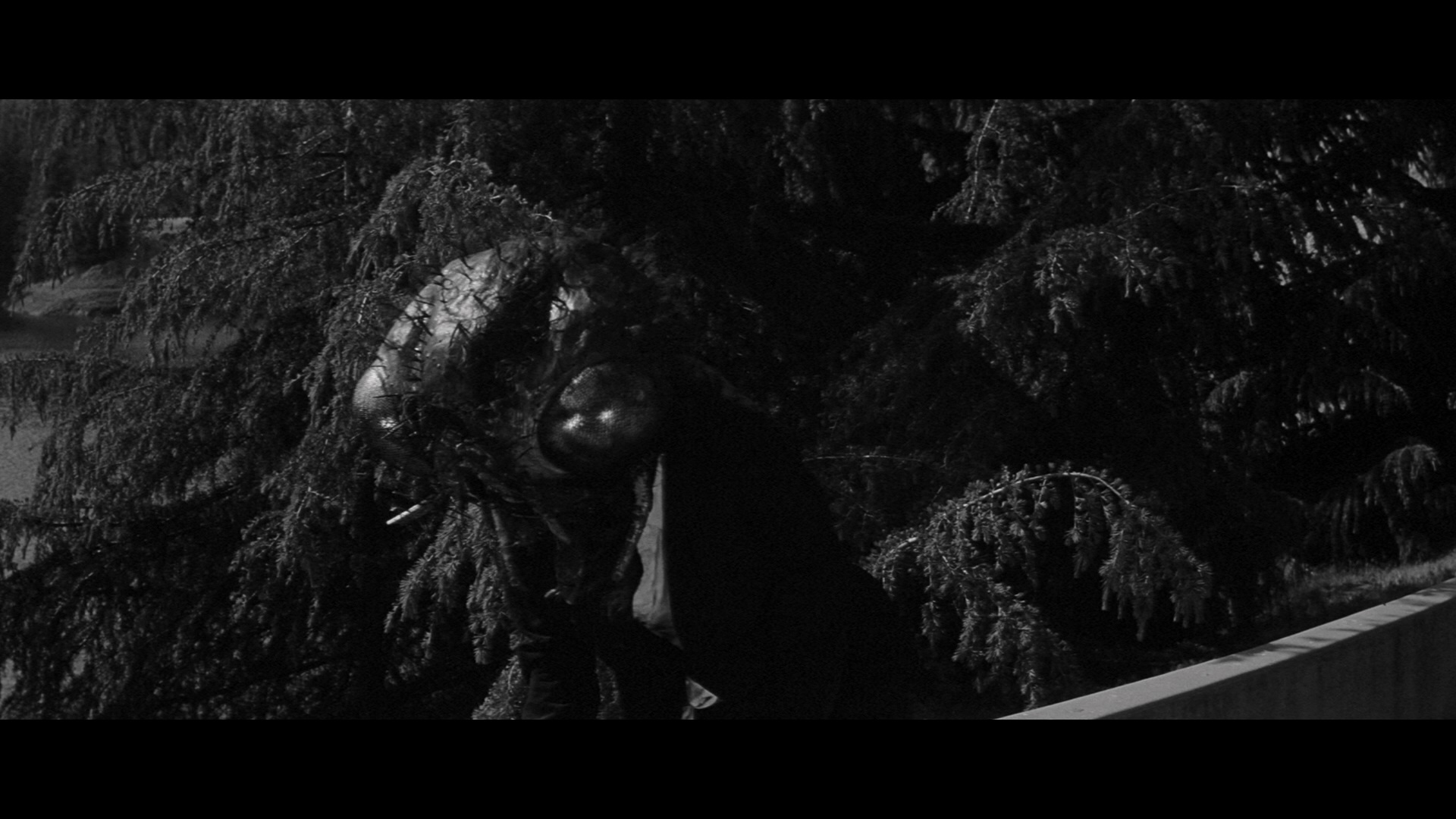 has his own
has his own 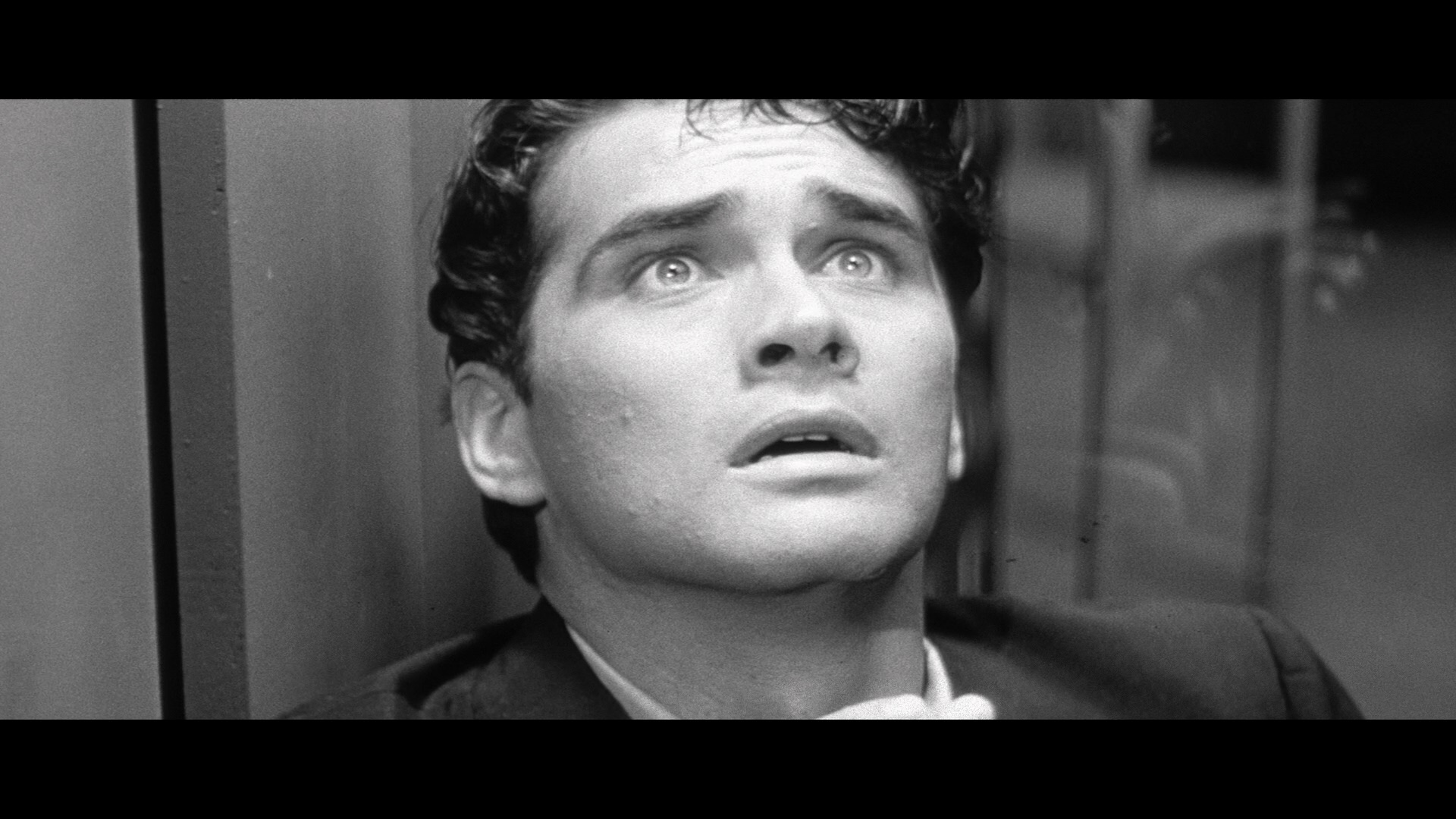 nefarious motives to make a lot of money off of Philippe's work, and our hero quickly finds out that becoming a scientific explorer can have truly horrific consequences.
nefarious motives to make a lot of money off of Philippe's work, and our hero quickly finds out that becoming a scientific explorer can have truly horrific consequences.  ugly stepchild of the series, the British-made Curse of the Fly came as a shock to viewers who came in expecting more outrageous fly/human body-swapping and
ugly stepchild of the series, the British-made Curse of the Fly came as a shock to viewers who came in expecting more outrageous fly/human body-swapping and  instead got a dark, Gothic, perverse meditation on deformity. The Delambre family name is still here along with dubious scientific experiments, but the "fly" connection is otherwise chucked out the window. Thankfully, at least for viewers with open minds, the result is the eeriest and most poetic installment in the '60s cycle, even if Vincent Price and the titular insect are nowhere in sight. Here's a simple test: if you can get on board with Halloween III: Season of the Witch and Curse of the Cat People, this will be right up your alley.
instead got a dark, Gothic, perverse meditation on deformity. The Delambre family name is still here along with dubious scientific experiments, but the "fly" connection is otherwise chucked out the window. Thankfully, at least for viewers with open minds, the result is the eeriest and most poetic installment in the '60s cycle, even if Vincent Price and the titular insect are nowhere in sight. Here's a simple test: if you can get on board with Halloween III: Season of the Witch and Curse of the Cat People, this will be right up your alley.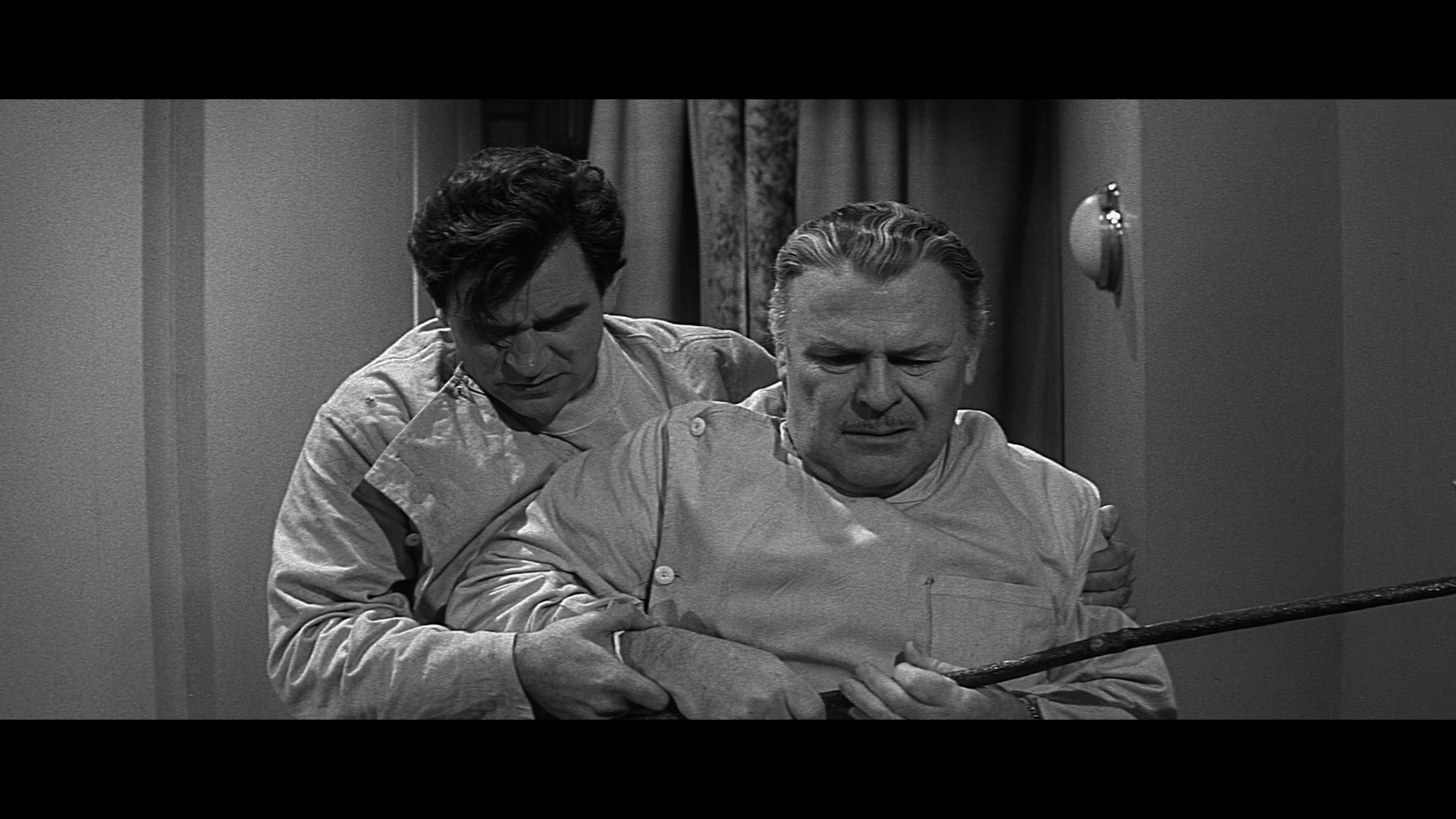 here: mad scientists, a disfigured first wife lurking about the estate, deformed hands clutching from secret
here: mad scientists, a disfigured first wife lurking about the estate, deformed hands clutching from secret 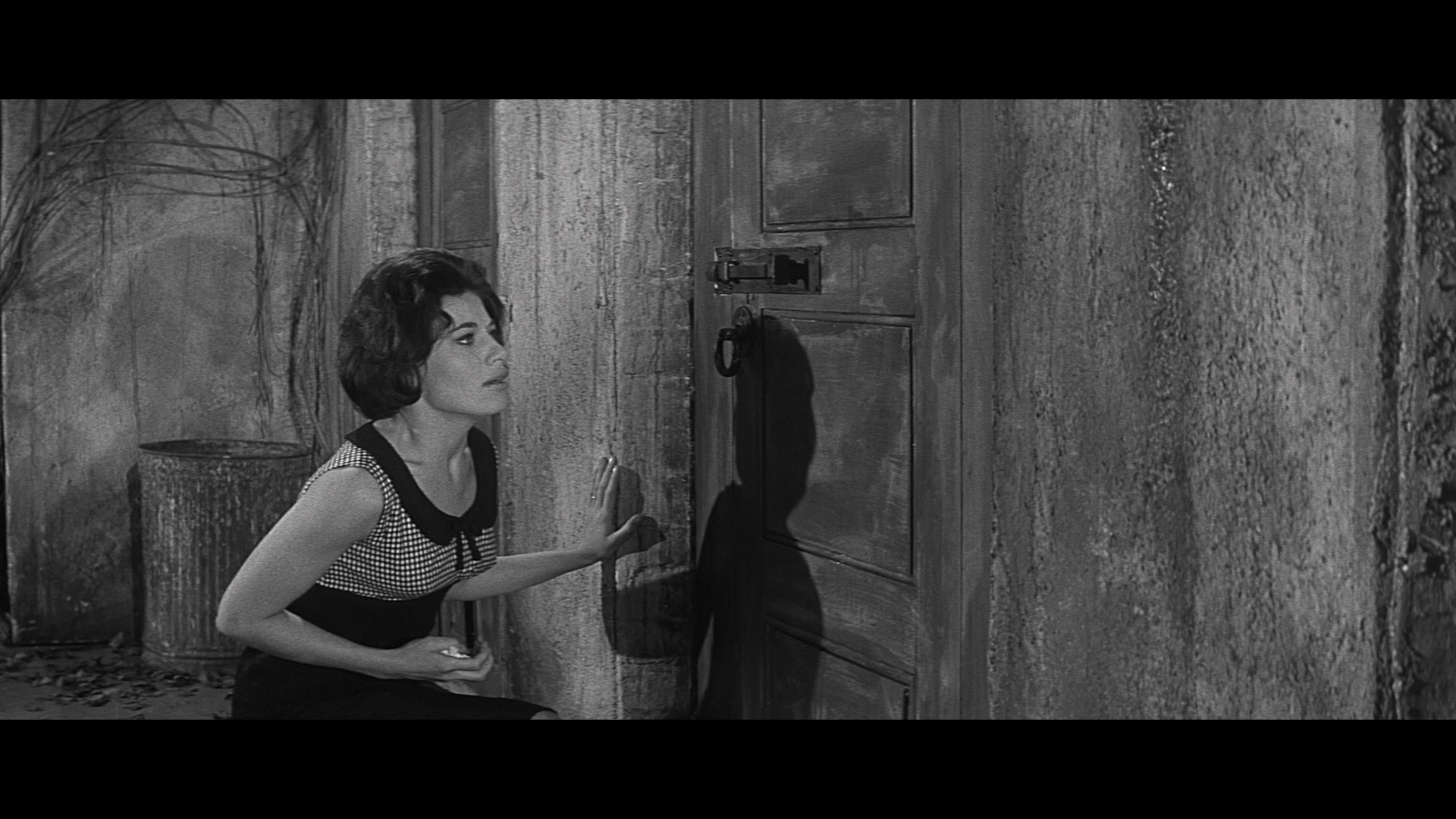 passageways, two sinister servants (Yvette Rees and Kato himself, Burt Kwouk) who know more than they're telling, and a wild climax that doles out an exceptionally nasty fate to nearly everyone in the script. Composer Bert Shefter (the only big carryover from the previous Fly film) also offers an effective score, which ranges from the lyrical opening credits to some genuinely nerve-fraying atonal passages.
passageways, two sinister servants (Yvette Rees and Kato himself, Burt Kwouk) who know more than they're telling, and a wild climax that doles out an exceptionally nasty fate to nearly everyone in the script. Composer Bert Shefter (the only big carryover from the previous Fly film) also offers an effective score, which ranges from the lyrical opening credits to some genuinely nerve-fraying atonal passages.
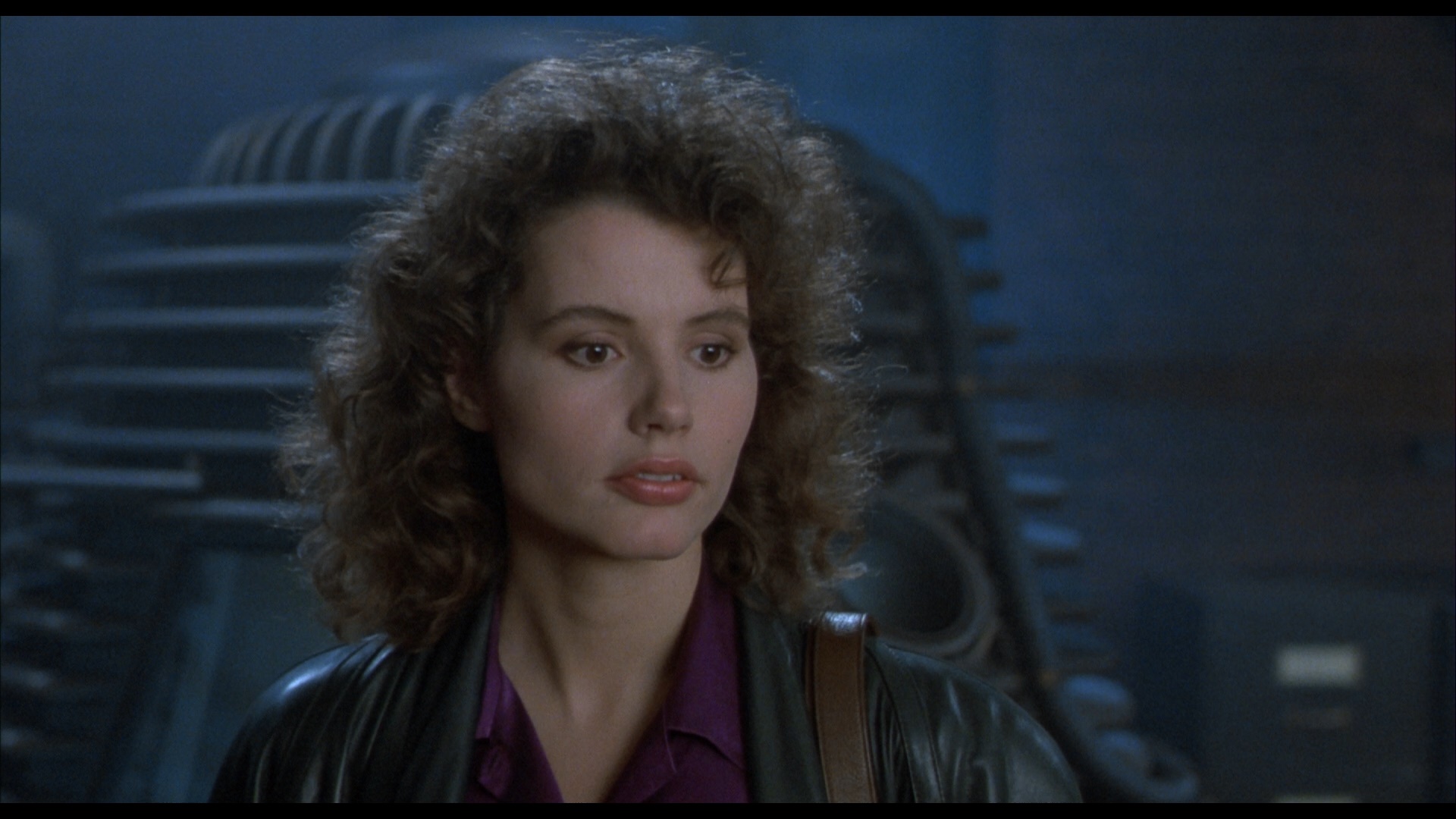 catchphrase with "Be afraid; be very afraid," it brought Cronenberg's body horror approach to the masses like never before and paved the way for his next foray into medical horror, Dead Ringers. The film also introduced a strong love story for the first time in his filmography, an aspect that ended up defining the direction
catchphrase with "Be afraid; be very afraid," it brought Cronenberg's body horror approach to the masses like never before and paved the way for his next foray into medical horror, Dead Ringers. The film also introduced a strong love story for the first time in his filmography, an aspect that ended up defining the direction 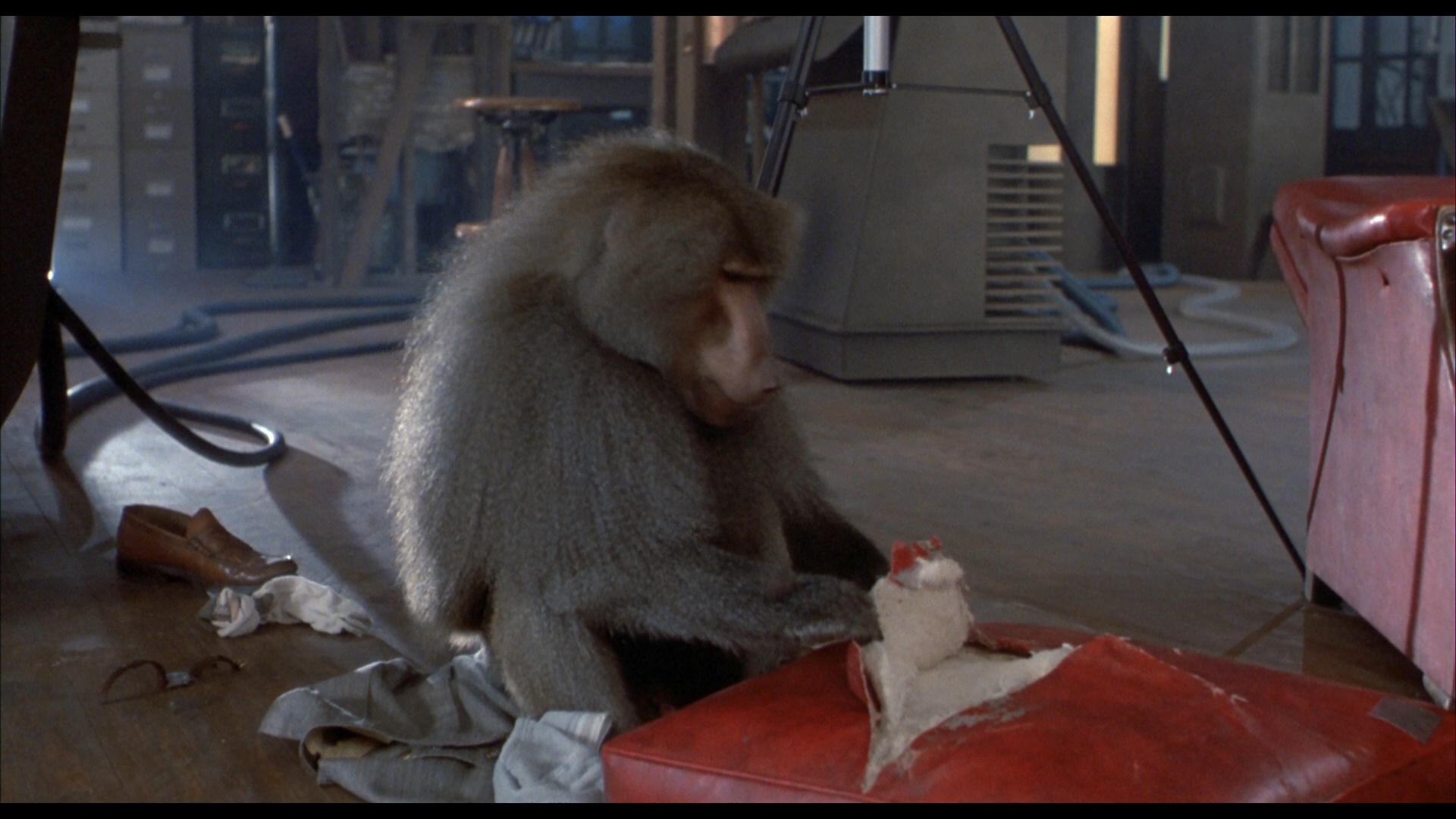 of the film in its final cut with some of the more grotesque inessential elements falling by the wayside.
of the film in its final cut with some of the more grotesque inessential elements falling by the wayside. 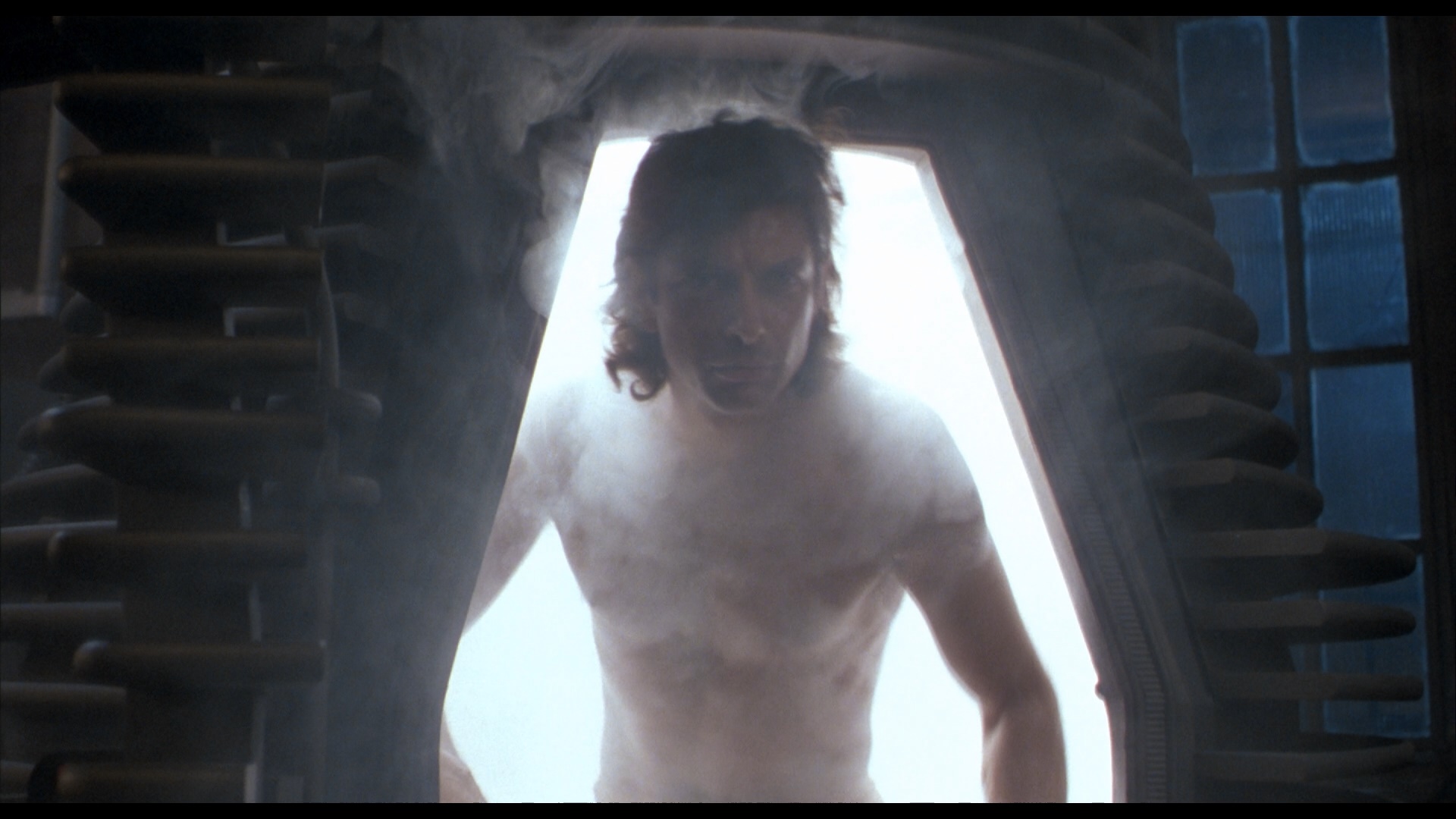 screening. Two extended scenes ("reconciliation" and "the poetry of the steak") are also added along with five film tests (opening titles, pod lighting and effects, Brundlefly makeup, exploding space
screening. Two extended scenes ("reconciliation" and "the poetry of the steak") are also added along with five film tests (opening titles, pod lighting and effects, Brundlefly makeup, exploding space  bug, and Cronenfly), a trivia track option, and various step-through text supplements: the original George Langelan short story, Pogue's original screenplay, the Cronenberg rewrite, a CineFX article ("The Fly Papers"), and two American Cinematographer articles ("New Buzz on an Old Theme," "More about The Fly"). After that, how about three TV spots, a teaser, a trailer, the original EPK featurette (6m58s) and Cronenberg profile (4m21s), and multiple still galleries (posters and lobby cards, publicity, behind the scenes, concept art, monkey-cat, space bug, arm wrestling, and makeup). All of that is present and accounted for on the Scream Factory disc as well, which shares the same excellent HD transfer complete with 5.1 and 2.0 DTS-HD English tracks (with optional English subtitles, as with the other discs in the set) which both feature an active, enveloping mix that works about the same with either option. However, you also get six major new extras as well including an audio commentary by author and film historian William Beard, Among the five new featurettes, don't miss the great "The Meshuggener Scientist" (13m26s) with Mel Brooks himself chatting about his affinity for some horror films (Frankenstein in particular, no surprise), his amusing big issue with the original film, and the reason he was adamant about casting Goldblum (whose piano skills came in handy as well). In "Beauty and the Beast" (22m49s), producer Stuart Cornfeld explains how his own love of romantic horror stories impacted his approach to this film and the way he brought the property to Brooks via Pogue's original script. Then an untitled piece with casting director Deirdre Bowen (14m37s) touches on her work putting together the cast just after having a baby and getting the script from Cronenberg, while the thorough "David's Eyes" (25m24s) catches up with regular Cronenberg cinematographer Mark Irwin to discuss their own artistic method of communication and his entry into the film business in Canada that led to much bigger things. Finally, "A Tragic Opera" (9m16s) features Cronenberg's composer of choice, Howard Shore, speaking (with a strong echo) about the approach they take together and the impact his then-recent binging on Italian opera trickled into his grandiose approach to this score. (Of course, this film in turn wound up being turned into a real opera by Shore and Cronenberg in 2008.) Keep an eye out for two Easter eggs, too, which have been around since the DVD. Interestingly, no release of this film even acknowledges the Bryan Ferry song recorded for it or its tie-in music video.
bug, and Cronenfly), a trivia track option, and various step-through text supplements: the original George Langelan short story, Pogue's original screenplay, the Cronenberg rewrite, a CineFX article ("The Fly Papers"), and two American Cinematographer articles ("New Buzz on an Old Theme," "More about The Fly"). After that, how about three TV spots, a teaser, a trailer, the original EPK featurette (6m58s) and Cronenberg profile (4m21s), and multiple still galleries (posters and lobby cards, publicity, behind the scenes, concept art, monkey-cat, space bug, arm wrestling, and makeup). All of that is present and accounted for on the Scream Factory disc as well, which shares the same excellent HD transfer complete with 5.1 and 2.0 DTS-HD English tracks (with optional English subtitles, as with the other discs in the set) which both feature an active, enveloping mix that works about the same with either option. However, you also get six major new extras as well including an audio commentary by author and film historian William Beard, Among the five new featurettes, don't miss the great "The Meshuggener Scientist" (13m26s) with Mel Brooks himself chatting about his affinity for some horror films (Frankenstein in particular, no surprise), his amusing big issue with the original film, and the reason he was adamant about casting Goldblum (whose piano skills came in handy as well). In "Beauty and the Beast" (22m49s), producer Stuart Cornfeld explains how his own love of romantic horror stories impacted his approach to this film and the way he brought the property to Brooks via Pogue's original script. Then an untitled piece with casting director Deirdre Bowen (14m37s) touches on her work putting together the cast just after having a baby and getting the script from Cronenberg, while the thorough "David's Eyes" (25m24s) catches up with regular Cronenberg cinematographer Mark Irwin to discuss their own artistic method of communication and his entry into the film business in Canada that led to much bigger things. Finally, "A Tragic Opera" (9m16s) features Cronenberg's composer of choice, Howard Shore, speaking (with a strong echo) about the approach they take together and the impact his then-recent binging on Italian opera trickled into his grandiose approach to this score. (Of course, this film in turn wound up being turned into a real opera by Shore and Cronenberg in 2008.) Keep an eye out for two Easter eggs, too, which have been around since the DVD. Interestingly, no release of this film even acknowledges the Bryan Ferry song recorded for it or its tie-in music video.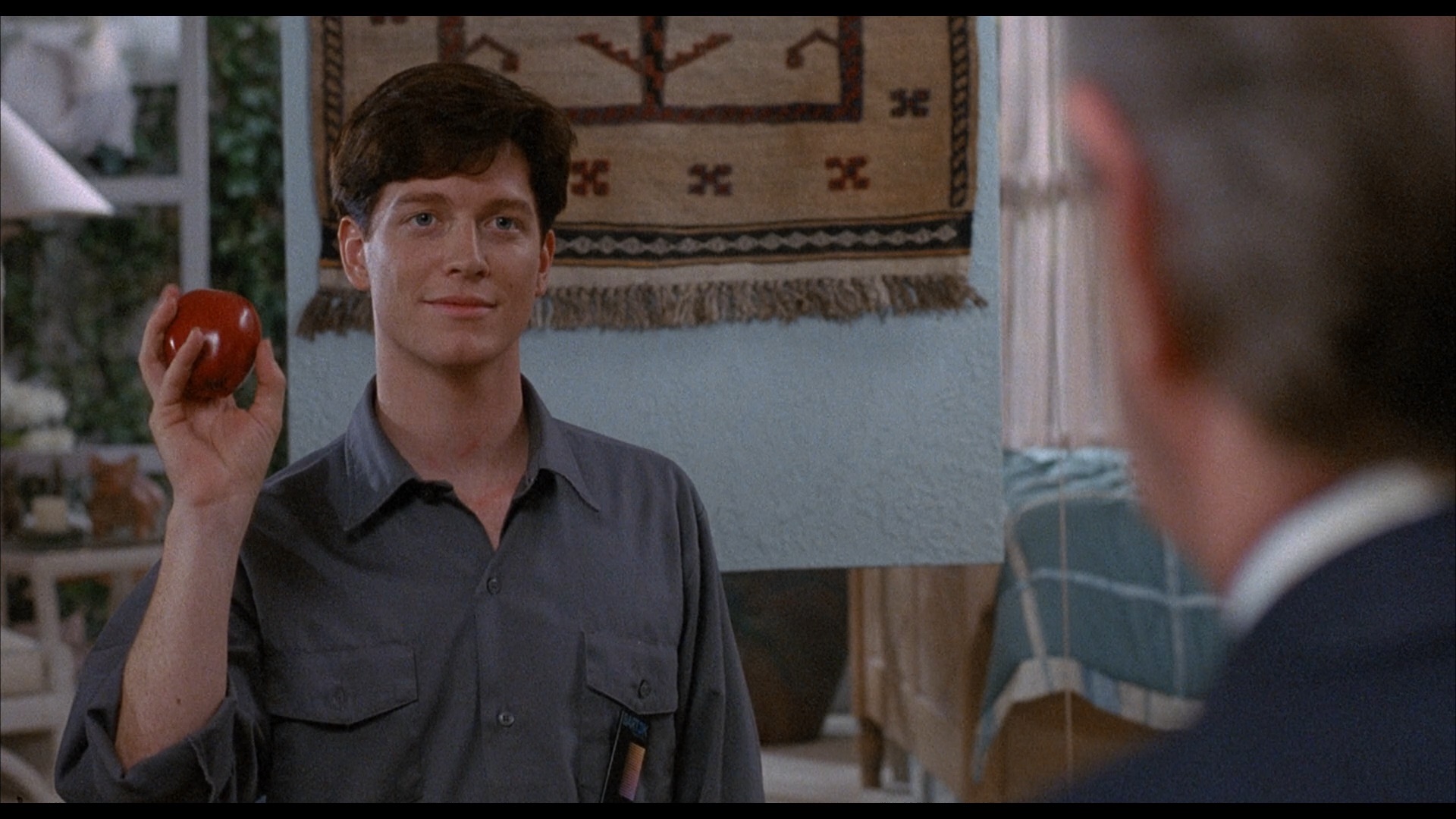 Of course,
Of course, 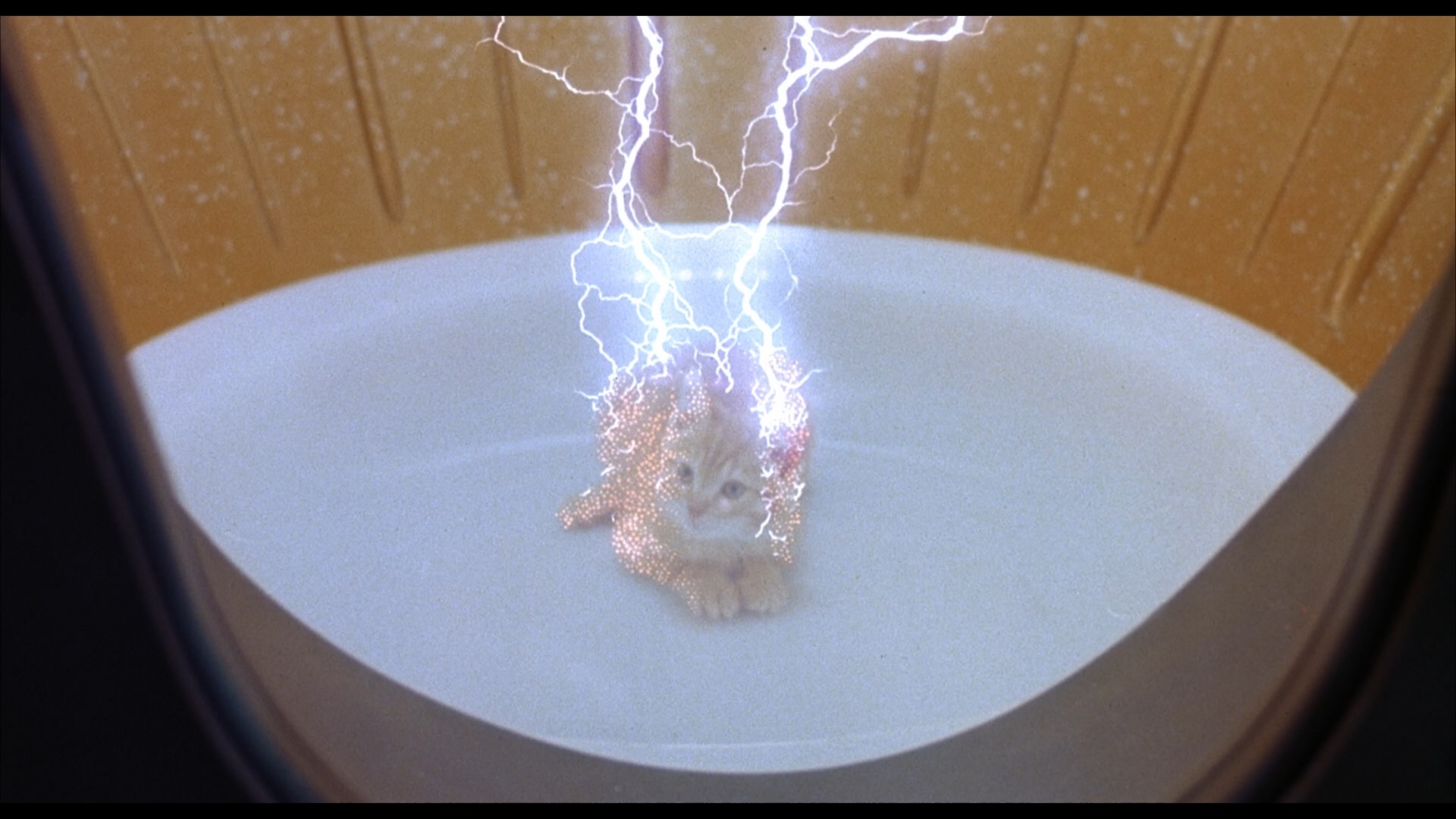 history repeated itself with an inevitable sequel soon following and revolving around the son of the original film's unlucky scientist. This time Eric Stoltz takes the lead as Martin, the son of Seth and Ronnie (who dies in childbirth) who appears to be a normal human being despite a highly unusual entry into the world. However, he ages both physically and mentally at an accelerated rate while being raised by Bartok (Richardson), the financier behind the Brundle project. Now appearing as an adult despite his age, Martin befriends one of the facility's employees, Beth (Zuniga), only to discover that Bartok has a much darker plan in mind involving the telepods and a scheme to profit from Martin's own unusual genetic makeup.
history repeated itself with an inevitable sequel soon following and revolving around the son of the original film's unlucky scientist. This time Eric Stoltz takes the lead as Martin, the son of Seth and Ronnie (who dies in childbirth) who appears to be a normal human being despite a highly unusual entry into the world. However, he ages both physically and mentally at an accelerated rate while being raised by Bartok (Richardson), the financier behind the Brundle project. Now appearing as an adult despite his age, Martin befriends one of the facility's employees, Beth (Zuniga), only to discover that Bartok has a much darker plan in mind involving the telepods and a scheme to profit from Martin's own unusual genetic makeup. 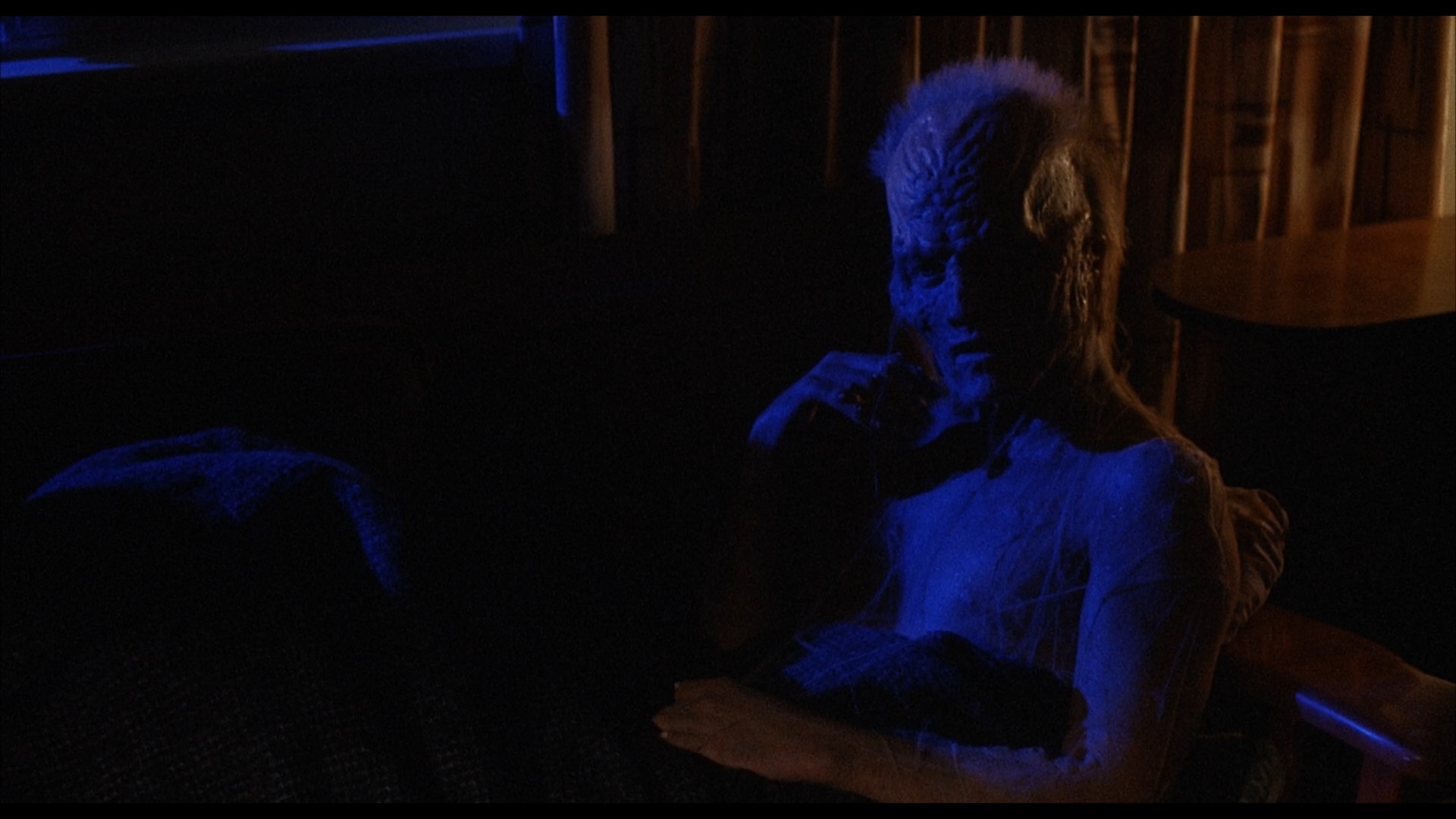 Buzz on Hollywood's Scariest Insect" (57m38s) for AMC, a video film production journal (18m4s) of raw behind-the-scenes footage, a "Composer's Master
Buzz on Hollywood's Scariest Insect" (57m38s) for AMC, a video film production journal (18m4s) of raw behind-the-scenes footage, a "Composer's Master 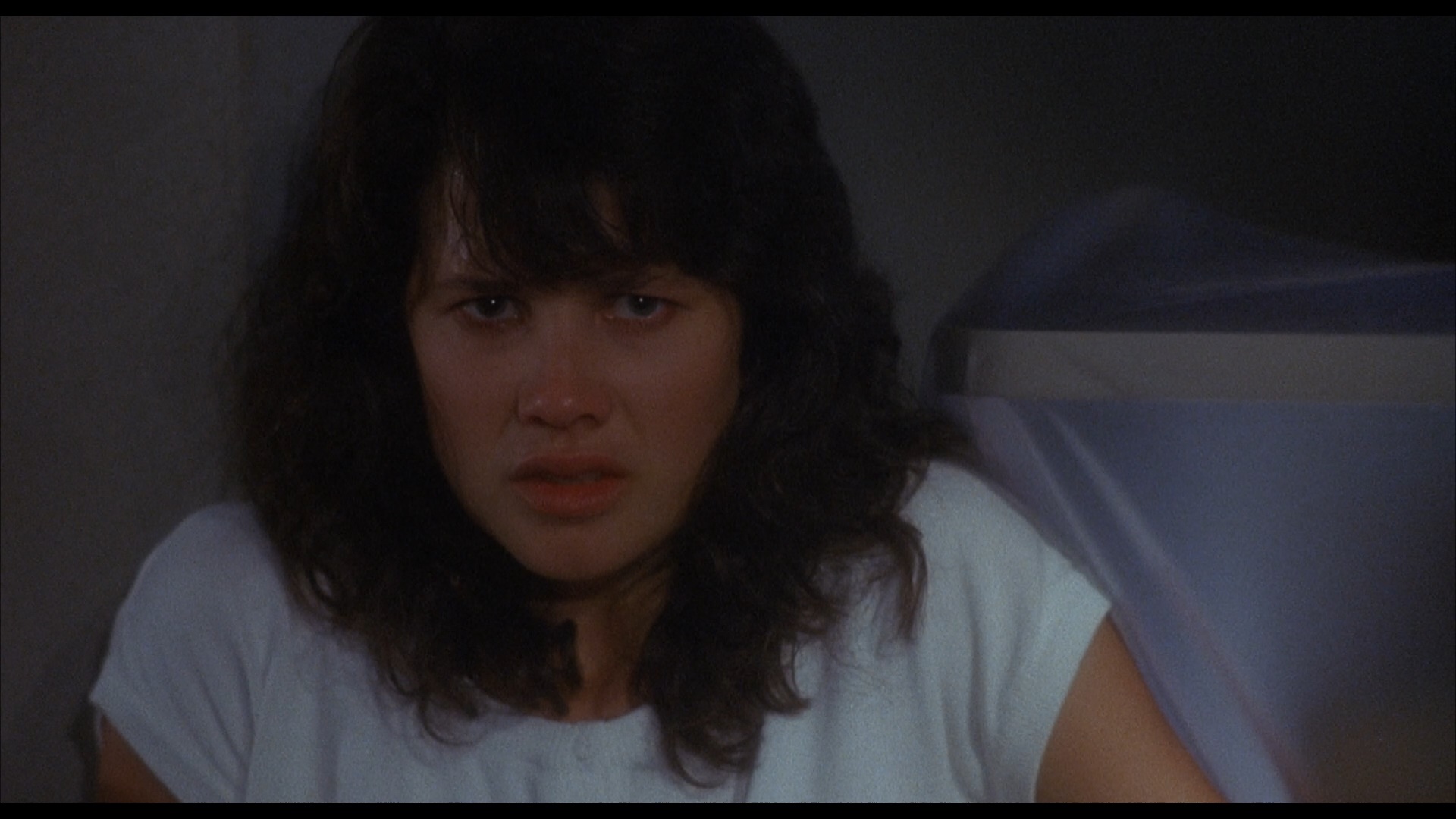 Class" (12m42s) with Young in his studio, a storyboard to film comparison (6m59s) with optional Walas commentary, the original EPK (5m10s), and extended EPK interviews with Walas (2m41s), Stoltz (3m35s), and Zuniga (3m31s). A goofy deleted scene (1m28s) at a burger join shows Martin getting even with some obnoxious kids, followed by a less satisfying alternate ending (1m10s), a teaser, the theatrical trailer, and galleries for stills and storyboards. All of that is present on the Scream Factory disc, which also adds six new featurettes in the process. Cornfeld returns for "Fly in the Ointment" (8m12s) to chat about the road to getting this film made without the involvement of most of the original participants, while "Original Visions" (14m6s) features screenwriter Mick Garris (one of four on the film, also including Frank Darabont) recalling how he ended up on this film thanks to his Steven Spielberg connection and became part of a series he (partially) admired. He also goes into some of the differences in the version he prepared, including more of a focus on the "Brundlechild" and his abilities. One of the other screenwriters, Ken Wheat, turns up for "Version 2.0" (22m13s), explaining how he and his brother Jim came on this project after Silent Scream and Ewoks: The Battle for Endor with their genre expertise coming in handy after aborted plans to work on earlier iterations of Fright Night II and Apt Pupil. An untitled interview with cinematographer Robin Vidgeon (15m20s) goes into the look of the film achieved via the choice of film stock and the decision to fill the film with sunlight, with the experience in some ways echoing his earlier gig with first-time director Clive Barker on Hellraiser. A new interview with Young, "Big and Gothic" (18m34s), catches up with the composer noting how his good timing going into UCLA led to his career starting off with New World and featuring a number of key genre films including this huge orchestral assignment after finding the right gateway through Roger Corman projects. He also notes his favorite track from the score and notes a fun little in-joke in the soundtrack sequencing. (Dig the choice of T-shirt here, too.) Finally, special effects artist Tom Sullivan appears in the last of the punny-titled featurettes, "Pretty Fly for a Fly Guy" (17m45s), explaining how he came on this film just after a terrible personal tragedy and approached this film with gusto after admiring the Cronenberg film. Again the image quality here is excellent and true to the look of the theatrical presentation (very colorful and kind of gritty), with DTS-HD MA 5.1 and 2.0 options really showing off the music in all its thunderous glory.
Class" (12m42s) with Young in his studio, a storyboard to film comparison (6m59s) with optional Walas commentary, the original EPK (5m10s), and extended EPK interviews with Walas (2m41s), Stoltz (3m35s), and Zuniga (3m31s). A goofy deleted scene (1m28s) at a burger join shows Martin getting even with some obnoxious kids, followed by a less satisfying alternate ending (1m10s), a teaser, the theatrical trailer, and galleries for stills and storyboards. All of that is present on the Scream Factory disc, which also adds six new featurettes in the process. Cornfeld returns for "Fly in the Ointment" (8m12s) to chat about the road to getting this film made without the involvement of most of the original participants, while "Original Visions" (14m6s) features screenwriter Mick Garris (one of four on the film, also including Frank Darabont) recalling how he ended up on this film thanks to his Steven Spielberg connection and became part of a series he (partially) admired. He also goes into some of the differences in the version he prepared, including more of a focus on the "Brundlechild" and his abilities. One of the other screenwriters, Ken Wheat, turns up for "Version 2.0" (22m13s), explaining how he and his brother Jim came on this project after Silent Scream and Ewoks: The Battle for Endor with their genre expertise coming in handy after aborted plans to work on earlier iterations of Fright Night II and Apt Pupil. An untitled interview with cinematographer Robin Vidgeon (15m20s) goes into the look of the film achieved via the choice of film stock and the decision to fill the film with sunlight, with the experience in some ways echoing his earlier gig with first-time director Clive Barker on Hellraiser. A new interview with Young, "Big and Gothic" (18m34s), catches up with the composer noting how his good timing going into UCLA led to his career starting off with New World and featuring a number of key genre films including this huge orchestral assignment after finding the right gateway through Roger Corman projects. He also notes his favorite track from the score and notes a fun little in-joke in the soundtrack sequencing. (Dig the choice of T-shirt here, too.) Finally, special effects artist Tom Sullivan appears in the last of the punny-titled featurettes, "Pretty Fly for a Fly Guy" (17m45s), explaining how he came on this film just after a terrible personal tragedy and approached this film with gusto after admiring the Cronenberg film. Again the image quality here is excellent and true to the look of the theatrical presentation (very colorful and kind of gritty), with DTS-HD MA 5.1 and 2.0 options really showing off the music in all its thunderous glory.